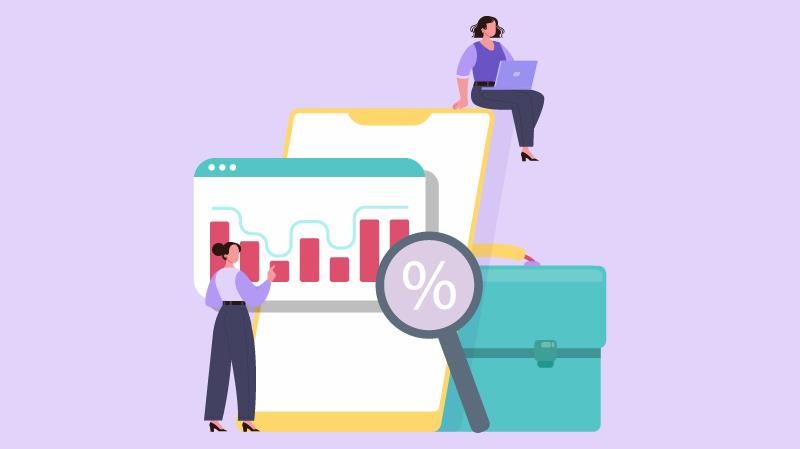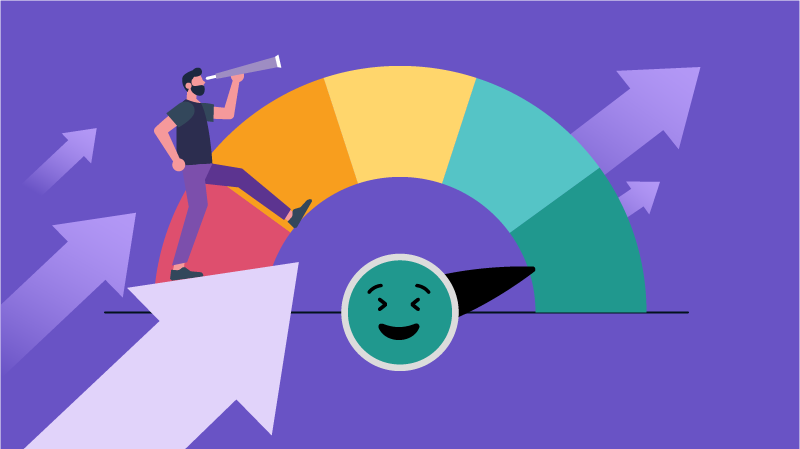Confidential Surveys: Meaning, Benefits, and When to Use Them

A Global Employee Recognition and Wellness Platform
Collecting employee feedback is crucial for making smart business decisions. But here's the catch - people need to feel safe sharing their honest thoughts, especially about sensitive workplace issues. For a broader understanding of how employee perceptions shape your workplace culture, see our Employee Climate Survey guide.
That's where anonymous and confidential surveys come in. They're designed to protect privacy while giving you the insights you need. The problem? Most people think these two terms mean the same thing.
They don't. And that confusion might be costing you the real, actionable feedback that could transform your organization.
Key Insights
- What is a confidential survey?
- Confidential vs Anonymous surveys: Key Differences
- Benefits of confidential surveys
- When to use confidential vs anonymous survey
- Conclusion
What is a Confidential Survey?
A confidential survey is like a locked diary with a key, only the right people can peek inside. Respondents’ identities are known to the survey administrator (e.g., HR) but not shared with others, including leadership. This setup lets you track trends, segment data, and even follow up with individuals without blowing their cover.
Why does this matter? Imagine rolling out a DEI (Diversity, Equity, and Inclusion) initiative in a hybrid workplace. You want candid feedback on microaggressions or burnout, but employees fear retaliation. A confidential survey ensures their voices are heard and allows HR to spot patterns (e.g., higher stress in a specific department) without outing anyone.
An anonymous survey on the other hand collects responses without any identifying information - no one can trace answers back to specific individuals. This complete anonymity encourages honest feedback on sensitive topics like leadership or workplace issues, but prevents follow-up or demographic analysis.
Confidential vs Anonymous surveys: Key differences
| Aspect | Confidential Survey | Anonymous Survey |
|---|---|---|
| Identity collected? | ✔ Yes — respondent name / ID stored on the back end | ✖ No — survey tool never records identifiable data |
| Who can see identities? | HR or a limited “need-to-know” group under strict access controls | No one — identities don’t exist in the dataset |
| Reporting view for managers | Aggregated results (e.g., team-level scores) — no individual names | Same aggregated view, plus it’s impossible to drill down to any person |
| Follow-up possibilities | Targeted coaching, check-ins, longitudinal tracking (trend a person’s or cohort’s scores over time) | No direct follow-up; improvements made only at group or policy level |
| Best-fit use cases |
Employee engagement pulses Hybrid/remote sentiment tracking Diversity, equity & inclusion feedback Post-training effectiveness (tie scores to participants) Product beta tests that need user cohorts tracked |
Harassment or ethics hotlines Whistle-blower reports (Sarbanes-Oxley, GDPR) Quick “smiley-face” kiosks at exits Town-hall Q&A boxes Idea boxes where politics might silence voices |
| Typical employee perception | “They’ll know it’s me, but only HR sees it and uses it to help.” | “Zero chance this is traced back. I can speak freely, period.” |
| Risk if mishandled | Breach of trust; legal exposure if data shared too widely | Smaller legal risk but harder to action; can attract off-topic or non-constructive comments |
Benefits of Confidential Surveys
Here are a few benefits of confidential surveys:
1. Candor you can actually use
When people know only a trusted few will see their name, they tend to drop the polite filter. You end up with real stories instead of safe clichés, which means you can fix what really hurts morale.
2. Pinpointed actions, not guesswork
Because responses are still linked to teams or locations, you can see exactly where a process stalls, or a manager needs coaching. No more rolling out a blanket program and hoping it sticks.
3. Progress you can measure
Run the same confidential pulse a few months later, and you will know if a change in policy moved the needle for the same group of employees. That before-and-after view keeps momentum alive and budgets justified.
4. Follow-up without breaking trust
Need clarity on a red-flag comment? You can open a private, two-way chat with the respondent while their identity stays shielded from anyone outside the small admin circle. Problems get solved faster and safer.
5. Peace of mind for regulators and employees
Confidential surveys create a tidy audit trail for compliance teams while reassuring staff that their feedback will not end up in public dashboards. The result is a workplace that feels both secure and heard.
When to use confidential vs. anonymous surveys?
Quarterly engagement pulse for a large workforce
To hear real voices and drive real change, use a confidential survey. It lets you dig into feedback by team or location, helping managers truly understand their people. Only a trusted few see detailed answers, while leaders get summary insights. This keeps trust alive and encourages honest, powerful feedback.
Harassment or Ethics Reporting
Keep it anonymous, psychological safety matters most. People need to trust they can speak up without being identified. Use a trusted third-party tool and share clear promises like “we respond within 48 hours” so employees believe the system works.
Post-Merger Culture Check
Use confidential surveys to compare teams from both companies over time. Hide names but link feedback to groups securely. Only a small, trusted merger team should access this info under strict agreements.
Shop-Floor Safety Audit in a Union Plant
Choose confidential surveys here. Regulators and union reps want proof that safety concerns tied to shifts get addressed. Collect shift and role info but remove names, then review results together with union leaders.
Financial Whistle-Blower Channel (SOX Compliance)
Keep it strictly confidential. Laws require protecting reporters’ identities. Offer easy ways to report, like a web form, so everyone can speak up safely. Avoid collecting info that could reveal who they are.
Innovation Contest or Hack Day Idea Box
Start with anonymous submissions so ideas shine on their own, not who submitted them. Later, winners can choose to reveal themselves for recognition, encouraging creativity and credit both.
Pulse Check for a Small Team (10 People)
Go confidential with grouped results because real anonymity isn’t possible in tiny teams. If responses are too few, combine them with larger groups. You might even bring in an outside person to collect and share feedback themes.
Customer Beta Test under NDA
Use confidential surveys so feedback links to usage, but identities stay protected. Explain clearly why identity is needed and how it will be kept safe, transparency builds trust.
Baseline Diversity, Equity & Inclusion Survey
Mix both approaches: keep demographic info confidential for meaningful analysis, while offering an anonymous option for open comments. This balances leadership’s need to spot gaps with employees’ need for a safe voice.
Limitations & Challenges of Confidential Surveys
Perceived Lack of Anonymity May Reduce Participation
Despite confidentiality assurances, some respondents may distrust that their identity is fully protected, leading to lower participation or guarded feedback.
Legal and Regulatory Responsibilities
Organizations must comply with privacy laws like GDPR, HIPAA, or CCPA, ensuring proper data handling, storage, and breach protocols to avoid legal repercussions.
Increased Administrative and Security Burden
Managing confidential data requires secure platforms, controlled access, staff training, and robust cybersecurity, increasing complexity and costs.
Conclusion: Choosing the Right Type of Survey
Both confidential and anonymous surveys have unique strengths and limitations. Your choice should align with:
The nature of information sought
The need for follow-up or action
The level of trust employees have in your data privacy measures
Ultimately, transparent communication about how data will be used, stored, and protected is critical to building trust and maximizing participation. When done well, confidential surveys become a powerful tool in your HR toolkit to drive meaningful engagement and organizational growth.
FAQs
Q1: Can confidential surveys lead to higher response rates compared to anonymous surveys?
Yes, when trust is high, confidential surveys can yield better response rates due to the possibility of follow-up and perceived accountability.
Q2: Can anonymous surveys be traced back to respondents?
Ideally no, but technical or IP data may sometimes risk indirect identification if not properly managed.
Q3: Is it better to use confidential or anonymous surveys in small teams?
In small teams, anonymity can be hard to guarantee due to limited respondents, so confidential surveys with clear privacy protocols are often preferred.
















